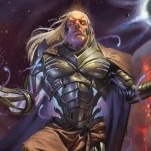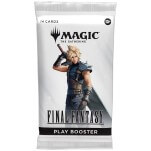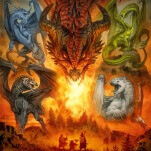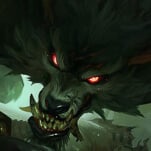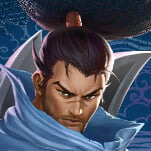Magic: The Gathering Fizzles in Space with the New Edge of Eternities Set

Magic: The Gathering originally came out in 1993, and it has done a lot of weird things in that time. The game has taken players on travels through the planes. We’ve worn cowboy hats, and we’ve learned about a city-world of guilds. We’ve seen a place made almost entirely of metal, and we’ve also gone to multiple places that were just very cold. Magic is a land of multitudes. And now we’re in space.
Or something like it. Edge of Eternities is a new Magic set that takes the game into the novel realm of space-fantasy, a genre where magic and interstellar travel sit together with relative ease. I admit, as a long-time Magic player, that I balk a little bit when confronted with this. Magical technological ships that take us from magical plane to magical plane are totally fine in my mind, but I draw the line at space. Or I guess I want to, in my hypocrisy, even though Wizards of the Coast fully broke this barrier a few years ago with the cyberpunk-inflected Kamigawa: Neon Dynasty.
I say this about my general feelings because I want to be honest about them before sharing my belief that I don’t find Edge of Eternities to be a very good Magic: The Gathering set. I’ve played a lot of it, probably more in the first week than any other set I’ve played in the past couple years, because I was struggling to figure it out. What cards are good? How do you play a limited format well? What are the card interactions that aren’t necessarily immediately clear but which are really fun to exercise and figure out on your own?
What I’ve mostly learned is that Edge of Eternities feels like a bit of a mess. The strengths are very strong. I was hesitant about the space theme and how it would work, but they sunk the shot. There are great big scary space ships and there are small, brave humans and there are weird space creatures that have to be dealt with. It is a set that plays a lot in a very specific pulp genre tone, and they got it right—it feels like you have plopped down into an adventure serial where sword-wielding knights might defeat stellar worms. That stuff is great.
The mess comes in when I’m actually engaging with the set mechanics, which dominate the play patterns of Edge of Eternities. The big space vehicles, which you power up by Stationing, are only viable if you are willing to play defensively and sit back. Warp, a mechanic that allows you to play a creature card for a single term to get an effect, interacts with Station by giving you creatures that you’re not scared to tap since you’re going to lose them anyway. This is notionally great, and the Warp cards mostly have very beneficial effects that you’re happy to get for free. The problem comes in when you have to do all of these things in sequence, which mostly asks you to sit back, power up a big board state, and generally play an undynamic game.
-

-

-

-

-

-

-

-

-

-

